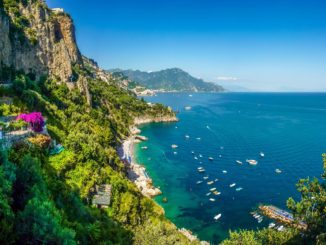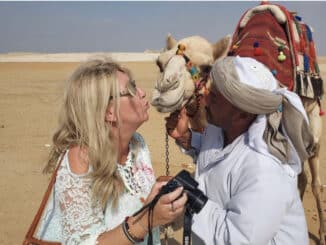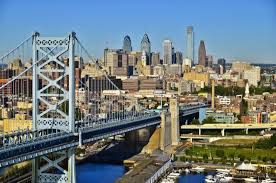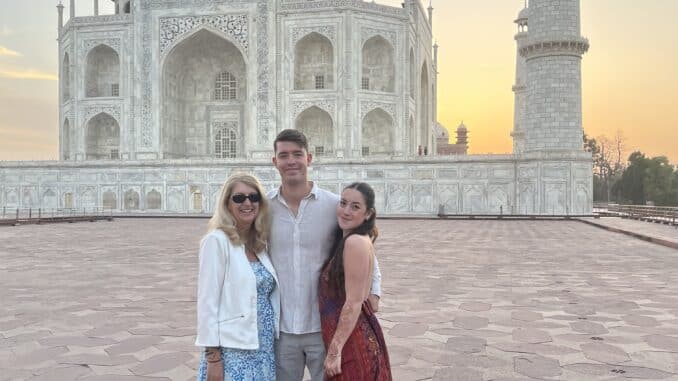
One of the highlights from my travels this year was a trip through India’s Golden Triangle. A guided tour is an excellent way to explore a feast of experiences without having to do all the groundwork yourself. This article was also featured in the Sunday Independent newspaper published on Sunday August 25th 2024.
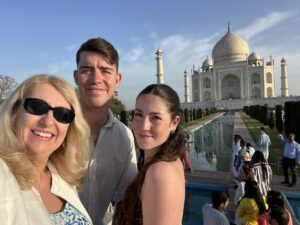
A cacophony of car horns fills the air. I’m dazzled as an array of colourful saris rush by the barber cutting someone’s hair on the pavement. The aroma of freshly ground spices reminds me what a pilot friend told me before coming here. India is an attack on the senses. He also advised me to pack a couple of toilet rolls! A sentiment echoed by our tour guide, Anurag Misra, who is a wealth of information on how to avoid any catastrophe on our thousand kilometer trip through ‘The Golden Triangle.’
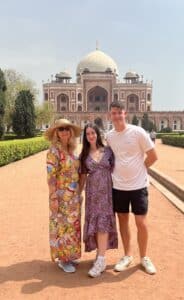 The cities of Delhi, Jaipur, and Agra are collectively included in this term and for good reason because they host some of the most spectacular buildings in India, ranging from the 13th century Mughal Period and include the jewel in India’s crown the Taj Mahal.
The cities of Delhi, Jaipur, and Agra are collectively included in this term and for good reason because they host some of the most spectacular buildings in India, ranging from the 13th century Mughal Period and include the jewel in India’s crown the Taj Mahal.
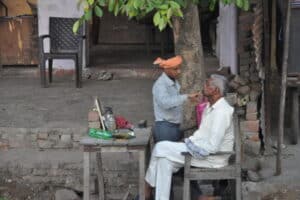
I’m accompanied by my curious adult children, Mark and Nicole, who jumped at the opportunity to join mum on a comfortable fully-guided-tour with Travel Department. On arrival, our most notable vision is the sheer volume of people living in dense conditions in the city centre. It’s not high rise like many cities in Europe or Asia. In fact, it startling that 33 million can live in such a low rise city with many on the streets. “Wealth is measured in smiles,” Anurag informs us.
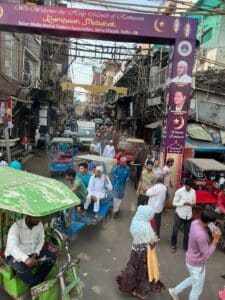
The input of Islam is evident in the enormous red mosque of Humayun’s tomb, our first excursion in Delhi. The large red sandstone monument is regarded as the first substantial example of Mughal architecture and was built in 1565. We must cover up before entry but really the rental of saris is more a form of income for the locals who charge a few rupees. Mark rocks his tiger print sari much to the amusement of the rest of the group. Even men must cover up if wearing shorts.
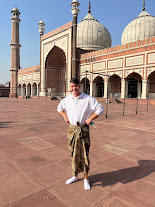
Next we make our way through the hordes of hawkers and motorcycles to Qutub Minar. Here the world’s tallest brick minaret dates back to 1220 and is a UNESCO World Heritage Site. We cannot leave the city without visiting the eternal flame that burns alongside Mahatma Gandhi‘s Memorial. 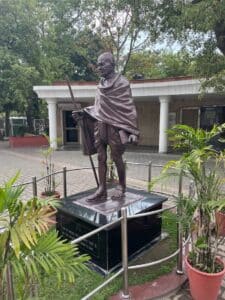 Quotes from the great man provide food for thought. “An eye for an eye makes the whole world blind.” Time has left its mark on Delhi but it has held its own as India’s capital for more than 100 years offering a nod to the past, and the countries flourishing present.
Quotes from the great man provide food for thought. “An eye for an eye makes the whole world blind.” Time has left its mark on Delhi but it has held its own as India’s capital for more than 100 years offering a nod to the past, and the countries flourishing present.
Jaipur
Jaipur is the capital of Rajasthan and endearingly named ‘The Pink City.’ Filled with street venders it offers the Indian adventure we’ve been dreaming of. At the centre lies City Palace, still a royal residence, offering gardens, courtyards and museums.
Amber Fort is the star attraction as it sits over the waters of Maota Lake. Before visiting however we wander the streets and rub shoulders with the cows that go wherever they please. It was built from pale yellow and pink sandstone and is divided into four main sections, each with its own courtyard. A long trek is averted as Anurag has organized jeeps to carry us to the top of hill to see the dazzling citadel.
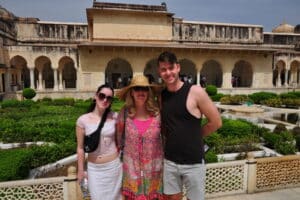
Anurag is passionate to show warm Indian hospitality to us for the duration of our stay. But he’s honest about the hawkers who troll our bus, their arms dripping in bracelets, bells and carved elephants. He warns us to avoid the elephant rides as the animals are not treated well. This sort of ethical advice about the local environment is one of the reasons I enjoy travelling with Travel Department. As tourism takes on sustainable messaging it’s important to leave a positive stamp on our travels when we can.
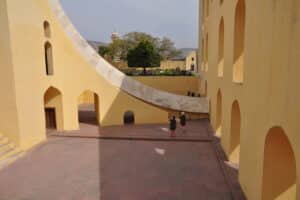
In Jaipur the astrological observatory of Jantar Mantar is home to the largest astronomical calculator in the world. Each part of the gigantic sundial hosts the 12 houses of the zodiac and has been a record of time, accurate to the second, for centuries.
In India it would be a disaster to marry without consulting your future partner’s astrology chart and this is carried out in scientific exactitude before a marriage is arranged until this day. The particulars are on a more agreeable basis now than in the past with many choosing to include parental involvement in choosing a life partner. Anurag explains, “your parents will choose wisely and want you to be happy.”
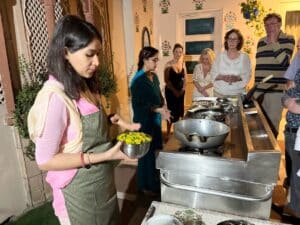
We spoke first hand to such a couple who live in Jaipur and run a small guest house together. They have carried on their family’s traditional values and although strange for Mark and Nicole, now that I’m a parent it seems to be a more educated way of finding a spouse than flicking left on tinder.
The astrology charts must include at least 85% compatibility between couples and nowadays young people have the choice to reject a suitor and find their own partner. While there we take a lesson in cooking Indian food and then we dine with the couple, enjoying an authentic family experience.
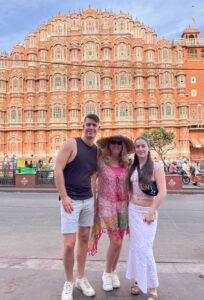 The colours in Jaipur continue to reach out and slap us across the eyes. We stop by to get our Instagram family shot at the intricately built Hawa Mahal, a five story Palace, that overlooks the bazaar. This leads to an afternoon dedicated to shopping and browsing the textiles stores and handcrafts with carpet weavers sitting hunkered over their wares. We left Jaipur with heavy hearts and lighter wallets.
The colours in Jaipur continue to reach out and slap us across the eyes. We stop by to get our Instagram family shot at the intricately built Hawa Mahal, a five story Palace, that overlooks the bazaar. This leads to an afternoon dedicated to shopping and browsing the textiles stores and handcrafts with carpet weavers sitting hunkered over their wares. We left Jaipur with heavy hearts and lighter wallets.
Dholpur
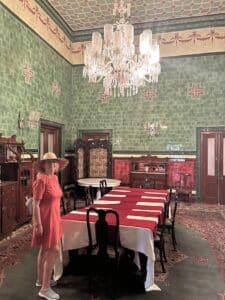
We are greeted by cawing peacocks as we arrive in Dholpur. Here we spend two nights in what can only be described as a palatial setting and home to local royalty. The Raj Niwas Palace was visited by Prince Albert, Queen Victoria’s husband, in 1878. In the grounds a spectacular restaurant and bar offer delicious hospitality.
Nicole has arrived on her birthday and Anurag has organised a card for the group to sign and after dinner a spectacular birthday cake is presented with candles. If my daughter’s notions of being a princess were ever vindicated then we had come to the right place. The rooms and villas are decorated with stunning antiques.
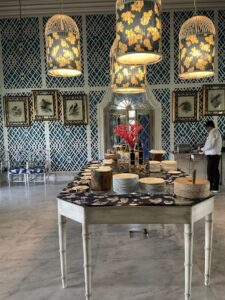 This hotel was our favourite and it had the most remarkable gardens and pool. We did the unforgivable next day deciding to stay at the luxurious pool side sunbathing instead of visiting Gawalior Fort.
This hotel was our favourite and it had the most remarkable gardens and pool. We did the unforgivable next day deciding to stay at the luxurious pool side sunbathing instead of visiting Gawalior Fort.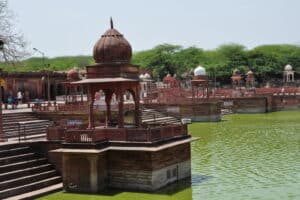
The beauty of having a guide means you get to choose what you do and don’t want to do. Varanasi wasn’t on our itinerary on this trip, but we found a similar pilgrimage site on a smaller scale outside of Dolpur, at Teerthraj Machkund. The Hindu pilgrims wash their bodies in the sacred lake surrounded by temples – some dating back from 700 to 900BC. Cows and monkeys hold court in this spiritual place amidst the chanting of worshippers.
Agra
A good time of day to visit India’s most famous monument is in the cool light of sunrise to avoid the searing heat which takes hold from April to September. Taj, as Anurag calls it, means crown and was built by Raj Shah Jahan for his wife, after her death. The Poet Rabindranath Tagore described Taj as ‘A teardrop on the cheek of eternity,’ and on hearing their story filled with romance and tragedy I understand why.
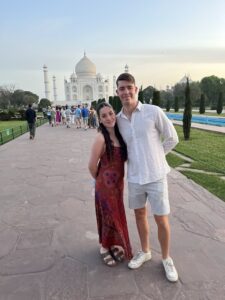
The couple had fourteen children during their years together. However one of their sons killed his brothers in a bid for power and incarcerated his father in Agra Fort for the last eight years of his life. There he could only look across the river at the tomb he had built to express his love. Nothing could have prepared us for the incredible sense of awe and privilege that accompanies first sight of this remarkable monument.
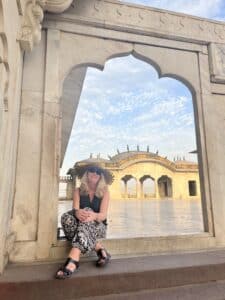
On the 7th of July 2007, after a worldwide online survey, The Taj Mahal became one of the Seven Wonders of the World. The pristine white marble mausoleum took no less than 22 years to build. It changes colour as the day progresses, glistening bright during noon. In the evenings it turns a golden shade and is probably at its most romantic. The descendants of the craftsmen who carved the intricate decorations of lapis lazuli, carnelian and agate stones into the white marble in 17th century still practice their skills to this day. The technique is a hidden secret as illusive and charming as the monument itself.
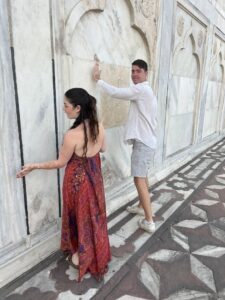
We stayed at the four star Grand Mercure Hotel, in Agra where the rooftop pool area boasts fine views of Taj. With breakfast and evening meal included as it had been at all our hotels and buffets offering Paneer Tikka, Biryani and European choices I developed an appreciation for spicy food without the option of beef. All of the hotels provided plenty of toilet paper!
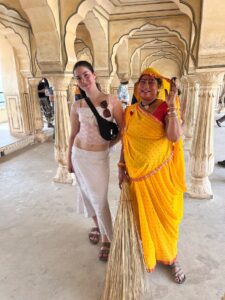
Anurag went out of his way to make sure that we got to see and do everything that was possible on the tour. My daughter Nicole was so enamoured with the henna tattoos on the ladies that she wanted one for herself. Anurag found a woman who met up with us at one of our stops and performed the masterly craft for a mere five euros, much to Nicole’s delight!
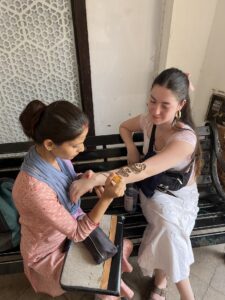
There’s no way that we could have packed so much into ten days travelling on our own. The expertise of following an itinerary with a professional guide makes great value for time and money in this exotic country. India is huge, stretching from the Himalayas to the Ocean. We had only scratched the surface but what a cornucopia of delights the Golden Triangle revealed.
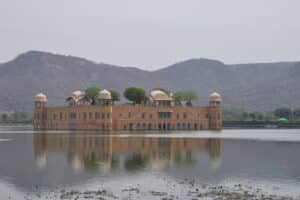
Highlight One
We stopped off in Abaneri, on the way from Jaipur to Dholpur to see the Harshat Mata Temple and the stepwell water system, where locals used to walk from the surrounding area to gather water. Walking up and down the Escher-like-steps is enough to confuse the mind but with impressive grounds and sculpted pillars telling exotic tales it is a great stop on the route. A collection of food trucks offer us tasty jellies and unusual spicy Bombay Mixes at the entrance.
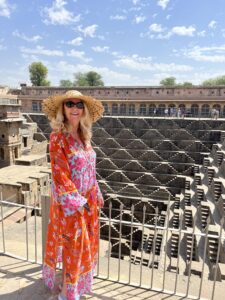
Highlight Two
Take a tuk tuk at the Bazaar in Jaipur. The traffic will amaze and don’t worry the traffic system may appear to be mayhem at first but the drivers are expert at avoiding each other and the random cows that wander the streets. Indian drivers don’t use indicators, but have an interesting collection of car horns. Don’t forget to haggle everywhere!
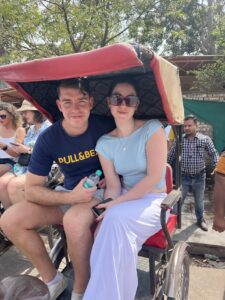
Factbox
India’s Golden Triangle https://www.traveldepartment.com/holiday/indias-golden-triangle
Travel Department have a range of holidays to India’s Golden Triangle departing from Dublin in March, Sept, Oct, Nov 2025. Prices from €2399 and includes 11 nights accommodation, flights, transfers and an expert local guide.
Book today by visiting www.traveldepartment.com or call one of their expert team on 01 6371650.

